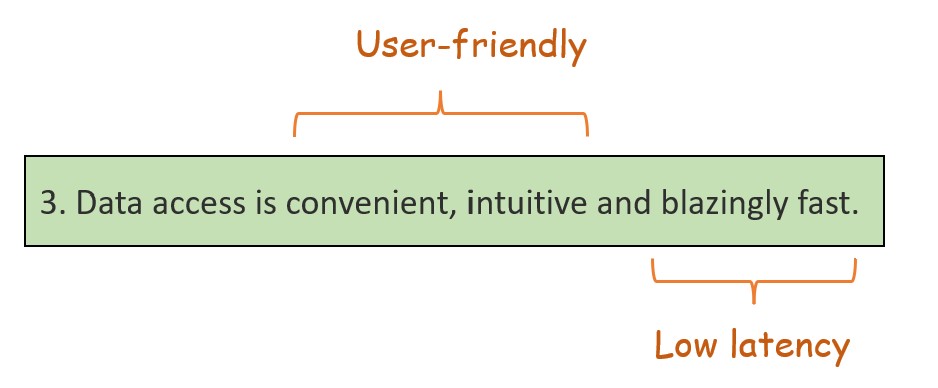
In today’s digital age, data is more important than ever. Businesses rely on data to make decisions, improve operations, and serve their customers. However, managing data can be a challenge. It can be spread across multiple systems and databases, and keeping it accurate and up-to-date, especially when it comes to “Master Data,” can be difficult.
According to a 2018 report from Gartner, organizations can spend an average of over $12 million every year due to poor data quality. This has likely gone up over the years. Apart from the cost of managing bad data, poor data quality can lead to suboptimal decisions, resulting in lost leads and missed market opportunities. However, measuring success (or failure) related to master data and defining appropriate Objectives and Key Results (OKRs) can be challenging. Most organizations look at the quality of data, which can be further broken down into consistency, completeness, reliability, accuracy, and freshness of the data. But even if we have a way to measure these aspects, how do we quantify the problem to define key results? In my opinion, preventing issues caused by bad master data will help keep things in check and ensure that we do not encounter problems down the line. The earlier we can catch these issues, the lower the cost. We can do this by monitoring lead indicators.
In this article, we will explore three key principles that provide a technical team’s perspective on measuring lead indicators for master data quality and beyond.
Understanding Master Data
Before delving into the principles, let’s take a moment to define master data. It refers to the fundamental data that describes essential entities within an organization, such as customers, products, locations, and employees. Master data is vital for accurate decision-making and efficient business process automation. While it changes infrequently, it serves as a universal requirement for various systems across the enterprise. It’s important to distinguish master data from reference data, which augments other data within an organization (e.g., countries, states, currencies, languages).
Leveraging Master Data Management Solutions
To manage master data effectively, companies invest in Master Data Management (MDM) tools. MDM provides organizations with a comprehensive solution for data management across different systems. These tools establish a single source of truth for master data, facilitating easy access and utilization. Moreover, MDM enhances data quality by enforcing standards, rules, and ensuring accuracy, consistency, and completeness. The resulting benefits include improved decision-making, operational efficiency, cost reduction, enhanced customer service, and compliance with regulations.
The Benefits and Challenges of MDM
While MDM offers numerous advantages, it’s essential to recognize that it’s not a one-size-fits-all solution. Each organization’s requirements for MDM vary based on factors such as size, industry, and data needs. Implementing an enterprise-wide MDM solution is a significant undertaking that presents challenges. These challenges include the cost of implementation, complexity in planning and execution, and the need for change management to train employees on new processes and procedures.
Modern Principles for Master Data Management Success
For engineering organizations undertaking such projects and measuring success can be challenging. Demonstrating the value and impact of your product/design/solution on the organization’s overall success can be a daunting task. I have faced similar struggles in dealing with this challenge, and I developed three principles to define success and ensure that we stay on the right track to achieve our North Star goals for this project.
These principles provide guidance for measuring success and showcasing the value of your work:
- Data is available, when needed, where needed and in the form that it is needed.
In today’s fast-paced business environment, data must be readily available, regardless of the device or format. This principle emphasizes the importance of offering a single access point for all master data, enabling universal availability, consistency and accessibility.
- Data is 100% accurate, reliable and consistent.
Accurate data is the bedrock of sound decision-making. Inaccurate data can lead to lost sales, reputational damage, and regulatory issues. This principle highlights the significance of data accuracy and consistency, providing a reliable foundation for business processes and decision-making.
- Data access is convenient, intuitive and blazingly fast.
Users expect instant access to data in a user-friendly format. Whether it’s developers integrating with APIs or business users interacting with the data through an intuitive interface. This principle emphasizes the need for convenient, intuitive, and blazing-fast data access.
Measuring Success with Metrics-Driven Principles
To quantify and measure the outcomes aligned with the above principles, specific metrics can be applied. Here are some key metrics for assessing the success of master data management initiatives:
Availability and Reliability

- System Uptime: Measure the total operational time divided by the total time, multiplied by 100.
- Mean Time Between Failures (MTBF): Calculate the average time between system failures.
- Error Budget: Determine the reliability of a system over a specified duration based on the difference between 100% and the Service Level Objective (SLO).
Quality

- Data Accuracy: Assess the accuracy and correctness of data by comparing accurate records to the total number of records.
- Data Completeness: Measure the extent to which required data attributes are populated by comparing the number of populated attributes to the total number of required attributes.
- Data Integrity: Evaluate the reliability and consistency of data relationships and dependencies by assessing the number of consistent relationships against the total number of relationships.
Customer Satisfaction and Latency

- Net Promoter Score (NPS): Measure customer loyalty and likelihood to recommend the MDM platform.
- Net Satisfaction (NSAT): Evaluate overall customer satisfaction with the master data system, considering both positive and negative sentiments.
- Response Time: Measure the time taken for the system to respond to user requests.
- Throughput: Assess the number of transactions or operations the system can handle in a given time period.
Conclusion
In conclusion, managing master data is crucial for organizations in today’s data-driven world. Poor data quality can lead to significant financial losses and missed opportunities. To ensure success in Master Data Management (MDM), it is essential to adopt a metrics-driven approach and adhere to modern principles.
The three key principles discussed in this article provide a solid foundation for measuring lead indicators and quantifying the success of MDM initiatives. By focusing on data availability, accuracy, reliability, convenience, and user satisfaction, organizations can achieve their desired outcomes and meet their North Star goals.
Implementing an MDM solution is a complex undertaking that requires careful planning, execution, and change management. However, the benefits are well worth the investment. With improved data quality, organizations can make informed decisions, reduce costs, enhance customer service, and ensure compliance with regulations.
By regularly monitoring and measuring the metrics associated with the identified principles, organizations can drive continuous improvement in data management practices. This will enable them to adapt to changing business needs, scale their operations, and stay ahead in a competitive landscape.